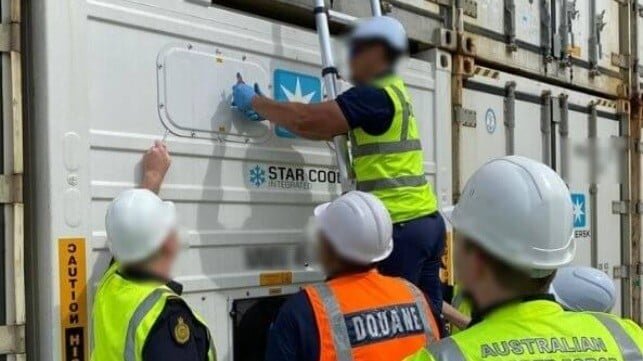Cracking Down on Cocaine Smuggling in the Pacific
Drug smugglers are constantly finding new ways to evade customs officials, especially when it comes to containerized freight. The cocaine trade is a lucrative business that relies on innovative smuggling routes and concealment methods to get narcotics past port authorities. In the Pacific region, Australia, known for being the world’s largest per-capita cocaine market, has been collaborating with international partners to combat drug trafficking throughout Oceania.
Recently, the Australian Border Force led a joint operation with officers from the U.S., New Caledonia, French Polynesia, and New Zealand to train local customs officials in detecting drugs hidden using the “rip” concealment method. This method involves concealing drugs within normal container shipments, often with the help of corrupt port workers, and intercepting the drugs upon arrival at the destination.
During the operation, a total of 140 kilos of cocaine were seized in French Polynesia, hidden in insulation panels in a reefer box, while another 67 kilos were found in New Caledonia behind panels in a shipping container. In Australia, where the street value of cocaine exceeds that of gold, authorities confiscated 285 kilos from three separate shipping containers.

Courtesy ABF
“Organized crime groups are highly sophisticated enterprises, with incredibly deep pockets and a constantly expanding global reach,” stated ABF Commander International Claire Rees. “The Rip method is becoming a hugely popular method of evasion, facilitated by the increase of trusted insiders and criminal infiltration within the global supply chain.”
The Pacific islands serve as a transit corridor for smuggling drugs from South America to Australia, earning the route the moniker “Pacific Drug Highway.” A variety of criminal organizations, including Latin American cartels, Chinese Triads, and local actors, are involved in this illicit trade, as noted by Joint Interagency Task Force – West advisor Jim Ink in an interview with New Lines Magazine.

